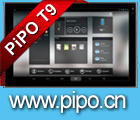Displayed here is Marvell’s broad range of network switch solutions running ARM processors. The first board uses dual-core ARM Cortex-A9. has 24x10Gbps Ethernet ports and two additional 40Gbps ports. Marvell’s ARM CPUs come embedded with their security engine that allows for monitoring data activity. We also see their prosumer range meant for professional use, with support for a 10Gigabit port.
Author:
EziSmart smartphone keyboard case for elderly
EziSmart is a company based in Norway with factories in Shenzhen. The EziSmart K1 is a range of keyboard cases that one can insert a phone into, to enable a hardware (non-QWERTY) keyboard. Targeted towards the elderly, the case can be flipped close to reveal an SOS button and four buttons for instant use. The company’s app displays the caller’s name in the open window on the case, with hardware buttons for picking up and ending calls. Their feature phone comes with a heart rate monitor, a pedometer and keypad with large keys.
MadGaze Smart Glasses
This wearable features a piece of glass that allows for a 800x480px display for visual information from the Android v5.1 interface. The wearable comes in B2B and B2C versions costing US$480 and US$639 respectively. Demonstrated is the consumer model that features a capacitive touchpad on the body that allows UI control and recognizes taps. Battery life is rated at 2-4 hours of moderate to heavy usage and over 4 hours of light usage. There’s an 8MP camera, 32GB of storage, and a microphone integrated for voice commands.
Epson Movierio Pro augmented reality
Epson Movierio Pro is a combination of sensors and cameras to provide a VR-like experience. The Moverio is meant for industrial settings where information about their work could be displayed on the screen in real time. Marketed as a “smart headset”, Moverie Pro resembles Google Glass a lot but is a lot more limited in scope. It uses Android and has a battery life of 4 hours.
Epson BT200 AR Headset with augmented translation
The Epson Movierio here is demonstrated through its applications; we see the use of the glasses in instantly producing translations of the words that are spoken to it. The headset is also capable of introducing depth to images like with augmented reality (AR) solutions.
3D VR tech coupled with Forum 8 software for accurate driving simulation
Forum 8 shows their driving simulation on Oculus VR headsets, allowing people to drive around the streets of Tokyo using gaming setups, consisting of a steering wheel and a pedal box. The company’s main focus is to develop interactive 3D VR simulation and modeling software.
Sharp Comirobo, talking robot is a personal companion
Sharp’s talking robot is on display, and it can respond to touch and voice. Company representatives demonstrate how it can make conversation, respond to questions about the weather, and even respond humanly when struck with a hand. The robot is not for sale and is only meant to showcase company capabilities.
inForce Snapdragon 615 System on Module for high-end IoT
inForce Computing, a Qualcomm partner, is focussed on utilising Snapdragon SoCs to power a multitude of applications – IoT, portable healthcare devices, robotics, and so on. At TechCrunch Disrupt, Keith Fleer, technical marketing manager at inForce, displays a robotics platform using a Snapdragon 615 SoC with peripherals such as a camera and gesture sensor, on a board with PWM output for servo motors. There is also a board using the Snapdragon 805 chipset (with a 2.7GHz quad-core CPU) that could be used to build video conferencing devices.
For more information see https://www.inforcecomputing.com/
$40 Ubuntu 4K on AmLogic S905 ODROID-C2 development board by HardKernel from South Korea
The HardKernal ODroid-C2 is a board that outputs native 4K resolution over HDMI 2.0. It uses 4x ARM Cortex-A53 cores at 1.5GHz (Mali-450 GPU) coupled with 2GB DDR3 RAM. Upto 128GB eMMC HS400 and 200GB UHS-1 microSD cards are supported simultaneously. A Gigabit Ethernet port as well as 4USB Host and 1 USB OTG ports are present. The demo setup consists of a 4K TV playing 4K videos while using Ubuntu OS with MATE desktop environment. The board costs US$41.95 without the recommended eMMC memory.
NXP S32V vision processor for self-driving cars
An application engineer from NXP demonstrates here their S32V234 automotive-grade image recognition processor that is meant to be used in autonomous self-driving vehicle applications. The board uses 4 Cortex-A53 cores , and an “Apex” signal processor that allows the image to be split into parts and processed on with algorithms in addition to an ISP for filtering. The demonstration is a camera feed processed to show object tracking, with relative motion speed and direction indicated. The board is also meant to recognize traffic signals , and supports 4 cameras with specific framerates for 360° vision processing.
MultiTech LoRaWAN IoT for agriculture
MultiTech is an IoT company that has on display here their solutions for smart agriculture. The setup uses LoRaWAN for data transmissions (frequencies range from 700MHz in China to 915MHz in Europe) with a conduit that contains the gateway. The conduit can be IP67 water and dust proof certified in order to be installed on a rooftop. The 15km range is valid for line-of-sight only. Battery life can vary depending on the amount of data transmitted, with a one-day transmission device lasting for as long as 15 years.The demo setup consists of a sensor submerged in the ground to detect water, with data transmitted to the conduit/gateway.
STM32H7 ARM Cortex-M7 by STMicroelectronics
STMicroelectronics has on display their ARM Cortex-M7. The H7 is the successor to the F7. The H7 uses 40nm process node over 90nm for the F7, allowing for a higher 400MHz clock speed (compared to 200MHz). The demo setup is running a fractal program and has UARC, Ethernet and several display outputs. The faster speeds allows for graphics processing that earlier needed Cortex-A cores, with audio applications possible as well.
NXP HomeKit SDK on Kinetis K64F ARM Cortex-M4 development board
NXP here is displaying their development system for Apple HomeKit. It consists of an RGB LED lightbulb being controlled through the setup using Bluetooth LE, with Siri integration. It uses an ARM Cortex-M4 CPU. Also on display is a Point-of-Sale kit (SLN POS RDR). Lastly we see NXP’s modular IoT gateway that supports Zigbee, WiFi, Ethernet, and NFC.
Technologic Systems at ARM Techcon 2016
Arizona-based Technologic Systems makes boards for embedded applications using ARM CPUs and Linux support packages. Their field applications engineer displays a range of boards with Marvell, NXP, FreeScale Semiconductor, and Cavium processors. Their BAT12 system on display is meant to provide power backup for a few hours in case of loss. They also display their range of LCD monitors with full computers built onto the back of them.
Minix TV Boxes at ARM Techcon 2016
Minix is a Hong Kong-based set top box manufacturer that has on display their entire range here. The bestselling model uses an RK3188 CPU (quad-core Cortex-A9) with an Ethernet port, 1GB RAM and 16GB of NAND flash. The X7 and X7 mini, their most mature platform, is used by companies to use their own software which is then sold to end consumers utilising digital signage. The S905 uses a 64-bit CPU, and supports 30fps 4K video. There is also a model with a 3G/4G SIM card and a PCI-E port for adding faster wireless cards or SSDs.
ComTech IoT location providing hardware and software
ComTech, a company that makes location offerings, is displaying here their solutions for obtaining location on ARM mbed. On display are three mbed setups that use cellular networks, GPS, and WiFi. The company provides the APIs and the SDKs to ARM mbed, and offer a cloud service for assistance in finding locations.
DevicePilot IoT operational management
Keith Reed, CEO of DevicePilot, explains about operational management in IoT. The company helps companies that deploy smart solutions, to ensure that their smart devices are kept up-to-date with the latest firmware and that they are functional. An example for the company is one of their clients that supply fire alarms – DevicePilot assists in ensuring that the alarms are functional.
SpinDance IoT development service for ARM mbed Ecosystem
Tom Miller, VP of Marketing for SpinDance, discusses the functions of the company. SpinDance provides turnkey solutions for companies that want to make smart products. Their demo product is one that is intended to be used for disasters/emergencies; it consists of a split ball that can be thrown into a collapsed building, for example, to detect sound and measure temperature, humidity and air pressure.
ATGames Zuma Gamers Portal, gameplay streaming, chat, interactive
ATgames shows their ARM Powered video game streaming platform, streaming retro games and any game, their game broadcasting platform runs on the ARM Cortex-A15 server chip previously developed by Calxeda. The Zuma service client captures screenshots from a user which is then uploaded to their server. They also have on display the consoles, one being a handheld Sega/Atari console running on ARM Cortex-A7, and a Sega Genesis console running on ARM Cortex-A9. The company has apps for both Windows and Android.
Cavium Octeon TX, 64bit ARMv8 for networking, security and storage
Cavium, a fabless semiconductor company based in California, has on display here their Octeon TX 81XX board. It has a quad-core ARMv8 processor for embedded applications, going up to 24 cores. The demo setup consists of an IoT gateway, using temperature and humidity sensors. It can use Bluetooth, WiFi, or cellular data.



